Global Power Line Communication System Market, By Type, By Component, By Application, By Voltage, By End User, By Region & Segmental Insights Trends and Forecast, 2024 – 2034
- Industry: Semiconductors & Electronics
- Report ID: TNR-110-1216
- Number of Pages: 420
- Table/Charts : Yes
- July, 2024
- Base Year : 2024
- No. of Companies : 10+
- No. of Countries : 29
- Views : 10202
- Covid Impact Covered: Yes
- War Impact Covered: Yes
- Formats : PDF, Excel, PPT
The power line communication system market is experiencing significant growth, driven by the increasing demand for reliable and efficient communication technologies. Power line communication leverages existing electrical infrastructure to transmit data, making it a cost-effective solution for various applications, including smart grid, home automation, and industrial control systems. The market is bolstered by advancements in smart metering and grid modernization efforts, particularly in developed regions. Moreover, the integration of power line communication in electric vehicle (EV) charging infrastructure is gaining momentum, further expanding market opportunities.
The power line communication system market is witnessing trends such as the integration of Internet of Things (IoT) devices and the development of high-speed broadband over power lines. Opportunities abound in emerging markets where infrastructure investments are accelerating. Additionally, the growing emphasis on energy efficiency and renewable energy sources presents substantial potential for power line communication applications in managing and optimizing energy consumption.
Investments in smart grid technologies to enhance energy distribution and management. Proliferation of IoT devices requiring robust communication networks. Expansion of EV charging networks utilizing power line communication for efficient data transmission and energy management. Policies promoting energy efficiency and modernization of electrical infrastructure. These factors collectively drive the adoption and expansion of power line communication systems, positioning the market for robust growth in the coming years.
In Terms of Revenue, the Global Power Line Communication System Market was Worth US$ 10.8 Bn in 2023 and is Anticipated to Witness a CAGR of 8.8% During 2024 – 2034.

Growth Drivers in Power Line Communication System Market
Smart Grid Development
Smart grids integrate digital communication technology to manage electricity distribution efficiently, ensuring reliability and optimizing energy usage. Power line communication systems play a crucial role in this transformation by enabling real-time data transmission across the existing electrical infrastructure. This facilitates advanced functionalities like automated metering, fault detection, and demand response, which are essential for modern grid management. As utilities worldwide invest heavily in smart grid projects to enhance grid reliability and meet regulatory requirements for energy efficiency, the demand for power line communication systems is expected to rise significantly, driving market growth and innovation in the sector.
Electric Vehicle Infrastructure Expansion
As the adoption of electric vehicles increases globally, there is a growing need for efficient and reliable EV charging networks. Power line communication systems are being integrated into these networks to facilitate seamless communication between EV chargers and grid operators. This integration enables functionalities such as dynamic load management, billing, and remote monitoring, ensuring optimal use of the electrical grid and preventing overloads. Governments and private sector investments in expanding EV infrastructure, coupled with supportive policies promoting sustainable transportation, are propelling the demand for power line communication systems, thereby driving market growth and fostering advancements in communication technology.
Power Line Communication System Market Segmentation by Type, Component, Application, Voltage, End User, Region
Narrowband PLC segment dominated the power line communication system market, capturing a significant revenue share of 73.7% over the forecast period. This dominance is attributed to its cost-effectiveness and reliability in long-range, low-data-rate applications, making it ideal for smart metering, grid management, and home automation systems. Narrowband power line communication is particularly favored in smart grid applications due to its ability to operate in noisy electrical environments and provide robust communication over extensive distances. Furthermore, the ongoing global initiatives towards grid modernization and the increasing deployment of smart meters are fueling the demand for narrowband power line communication solutions, consolidating its market leadership and driving its continued growth in the power line communication system market.
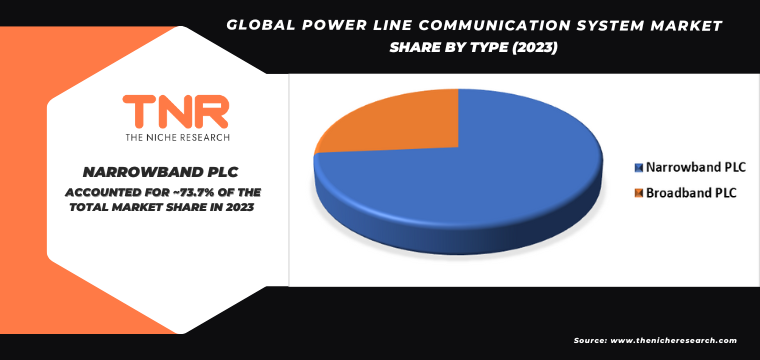
Hardware segment by component is set to dominate the power line communication system market, commanding a substantial revenue share of 45.8% over the forecast period.
This segment includes essential devices such as modems, couplers, line drivers, and transformers, which are crucial for the effective transmission and reception of data over power lines. The increasing adoption of smart grid technologies, smart metering systems, and advanced home automation solutions is driving the demand for robust and efficient power line communication hardware. Additionally, ongoing infrastructure upgrades and the expansion of electric vehicle (EV) charging networks are further propelling the hardware segment. As a result, investments in PLC hardware are expected to grow, reinforcing its leading position in the market and ensuring sustained revenue growth.
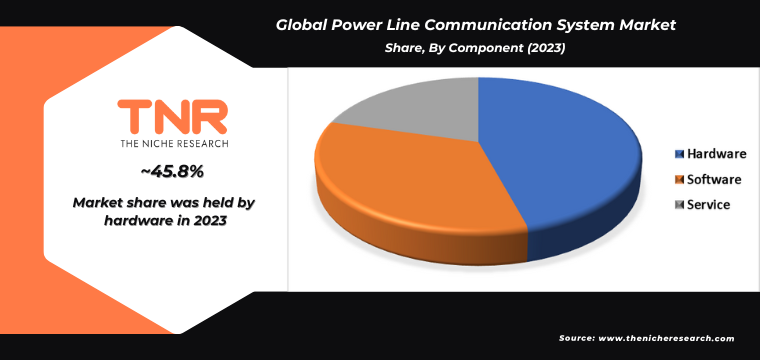
Indoor networking segment is anticipated to be the fastest-growing application in the power line communication system market, capturing a substantial revenue share of 42.5% over the forecast period.
This rapid growth is driven by the increasing demand for seamless and cost-effective connectivity solutions within residential and commercial buildings. Power line communication technology offers an attractive solution by utilizing existing electrical wiring to establish reliable networks, eliminating the need for additional cabling. The proliferation of smart home devices, multimedia streaming, and IoT applications further fuels this demand, as power line communication provides robust and consistent data transmission. Additionally, the ease of installation and scalability of power line communication systems make them a preferred choice for enhancing indoor networking capabilities, contributing to their accelerated adoption and market expansion.
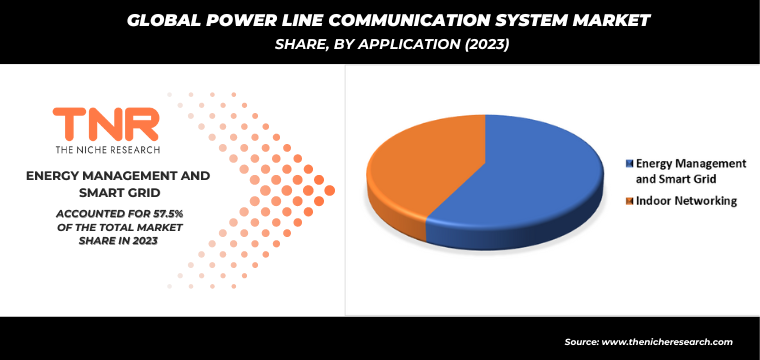
By voltage, high voltage is anticipated to grow fastest over the forecast timeline, capturing a revenue share of 33.2% in 2023.
This growth is driven by the increasing need for robust and efficient communication solutions in high voltage power transmission and distribution networks. High voltage power line communication systems are essential for ensuring reliable data transmission over long distances, which is critical for grid management, fault detection, and real-time monitoring. The ongoing expansion of smart grid infrastructure and the integration of renewable energy sources into the grid are further propelling the demand for high voltage power line communication technology. These systems’ ability to enhance the efficiency and reliability of power delivery positions them as a key growth area in the power line communication market.
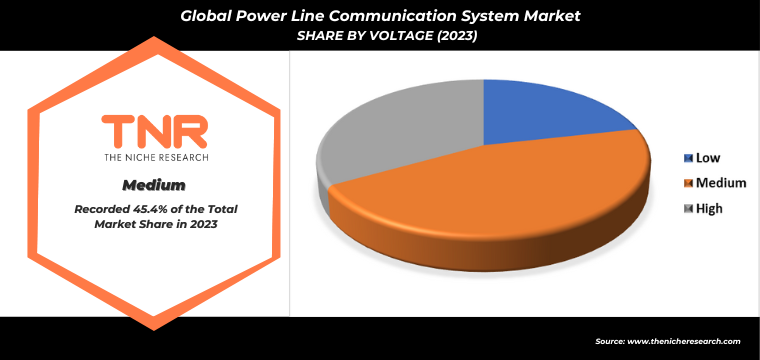
Commercial segment by end user, dominated the power line communication system market, accounting for a significant revenue share of 43.5% in 2023.
This dominance is attributed to the extensive adoption of power line communication systems in commercial buildings, such as offices, retail spaces, and industrial facilities, where reliable and cost-effective communication infrastructure is crucial. Power line communication technology’s ability to utilize existing electrical wiring simplifies installation and reduces costs, making it an attractive solution for commercial applications. Additionally, the increasing implementation of smart building technologies, energy management systems, and security solutions in commercial spaces is driving the demand for power line communication systems. The segment’s substantial revenue share reflects the growing recognition of power line communication benefits in enhancing operational efficiency and connectivity within commercial environments.
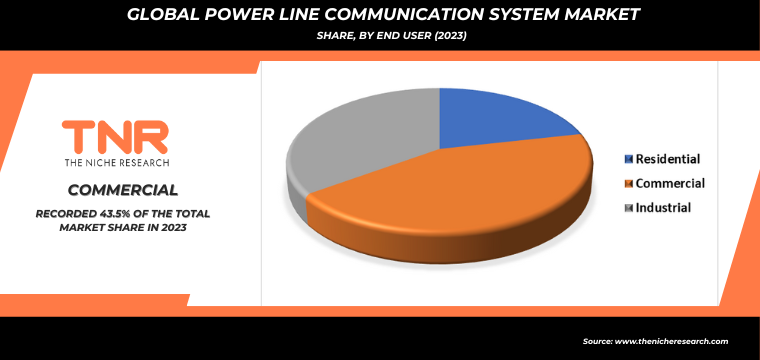
In 2023, Europe is anticipated to play a significant role in propelling the growth of the power line communication system market, contributing approximately 20.2% to its overall expansion.
This region’s prominence stems from widespread initiatives aimed at modernizing infrastructure, increasing energy efficiency, and advancing smart grid technologies. European countries are actively investing in smart metering systems, grid automation, and renewable energy integration, where power line communication systems play a crucial role in enabling secure and efficient data transmission over existing electrical networks. Moreover, supportive regulatory frameworks and government incentives further bolster the adoption of power line communication technology across various sectors, including residential, commercial, and industrial. As Europe continues to lead in sustainable energy practices and digital transformation initiatives, its contribution to the growth of the power line communication market is expected to remain robust in the coming years.
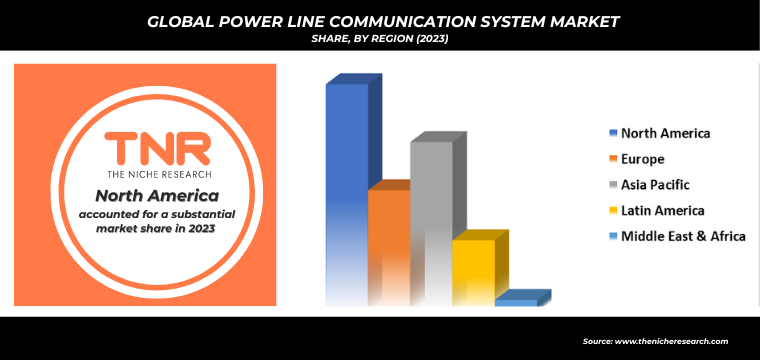
Key Developments
- In March, 2024, Panasonic Holdings’ Nessum technology, which integrates hybrid wired and wireless communication using Wavelet OFDM, was ratified as the IEEE 1901c standard. This technology is versatile, supporting various communication mediums, including underwater applications, and aims to enhance the IoT ecosystem through widespread licensing of semiconductor IP cores.
- In May, 2023, Hitachi Energy entered agreements with Saudi Electricity Company and ENOWA to deliver three high-voltage direct current (HVDC) transmission systems for NEOM, Saudi Arabia’s ambitious sustainable Giga-Project. These HVDC connections will supply up to 9 gigawatts of power, propelling the progress of NEOM.
Major Players in Power Line Communication System Market
- ABB
- AMETEK, Inc.
- Belkin International, Inc.
- devolo AG
- D-Link Corporation
- General Electric
- Hubbell Power Systems Inc.
- Landis+Gyr
- Netgear Inc.
- Schneider Electric SE
- Siemens AG
- TP-Link Technologies
- Zyxel Communications Corp.
- Other Industry Participants
Global Power Line Communication System Market Scope
| Report Specifications | Details |
| Market Revenue in 2023 | US$ 10.8 Bn |
| Market Size Forecast by 2034 | US$ 27.2 Bn |
| Growth Rate (CAGR) | 8.8% |
| Historic Data | 2016 – 2022 |
| Base Year for Estimation | 2023 |
| Forecast Period | 2024 – 2034 |
| Report Inclusions | Market Size & Estimates, Market Dynamics, Competitive Scenario, Trends, Growth Factors, Market Determinants, Key Investment Segmentation, Product/Service/Solutions Benchmarking |
| Segments Covered | By Type, By Component, By Application, By Voltage, By End User, By Region |
| Regions Covered | North America, Europe, Asia Pacific, Middle East & Africa, Latin America |
| Countries Covered | U.S., Canada, Mexico, Rest of North America, France, The UK, Spain, Germany, Italy, Nordic Countries (Denmark, Finland, Iceland, Sweden, Norway), Benelux Union (Belgium, The Netherlands, Luxembourg), Rest of Europe, China, Japan, India, New Zealand, Australia, South Korea, Southeast Asia (Indonesia, Thailand, Malaysia, Singapore, Rest of Southeast Asia), Rest of Asia Pacific, Saudi Arabia, UAE, Egypt, Kuwait, South Africa, Rest of Middle East & Africa, Brazil, Argentina, Rest of Latin America |
| Key Players | ABB, AMETEK, Inc., Belkin International, Inc., devolo AG, D-Link Corporation, General Electric, Hubbell Power Systems Inc., Landis+Gyr, Netgear Inc., Schneider Electric SE, Siemens AG, TP-Link Technologies, Zyxel Communications Corp. |
| Customization Scope | Customization allows for the inclusion/modification of content pertaining to geographical regions, countries, and specific market segments. |
| Pricing & Procurement Options | Explore purchase options tailored to your specific research requirements |
| Contact Details | Consult With Our Expert
Japan (Toll-Free): +81 663-386-8111 South Korea (Toll-Free): +82-808- 703-126 Saudi Arabia (Toll-Free): +966 800-850-1643 United Kingdom: +44 753-710-5080 United States: +1 302-232-5106 E-mail: askanexpert@thenicheresearch.com
|
Global Power Line Communication System Market
By Type
- Narrowband PLC
- Broadband PLC
By Component
- Hardware
- Software
- Service
By Application
- Energy Management and Smart Grid
- Indoor Networking
By Voltage
- Low
- Medium
- High
By End User
- Residential
- Commercial
- Industrial
By Region
- North America (U.S., Canada, Mexico, Rest of North America)
- Europe (France, The UK, Spain, Germany, Italy, Nordic Countries (Denmark, Finland, Iceland, Sweden, Norway), Benelux Union (Belgium, The Netherlands, Luxembourg), Rest of Europe)
- Asia Pacific (China, Japan, India, New Zealand, Australia, South Korea, Southeast Asia (Indonesia, Thailand, Malaysia, Singapore, Rest of Southeast Asia), Rest of Asia Pacific)
- Middle East & Africa (Saudi Arabia, UAE, Egypt, Kuwait, South Africa, Rest of Middle East & Africa)
- Latin America (Brazil, Argentina, Rest of Latin America)
Report Layout:
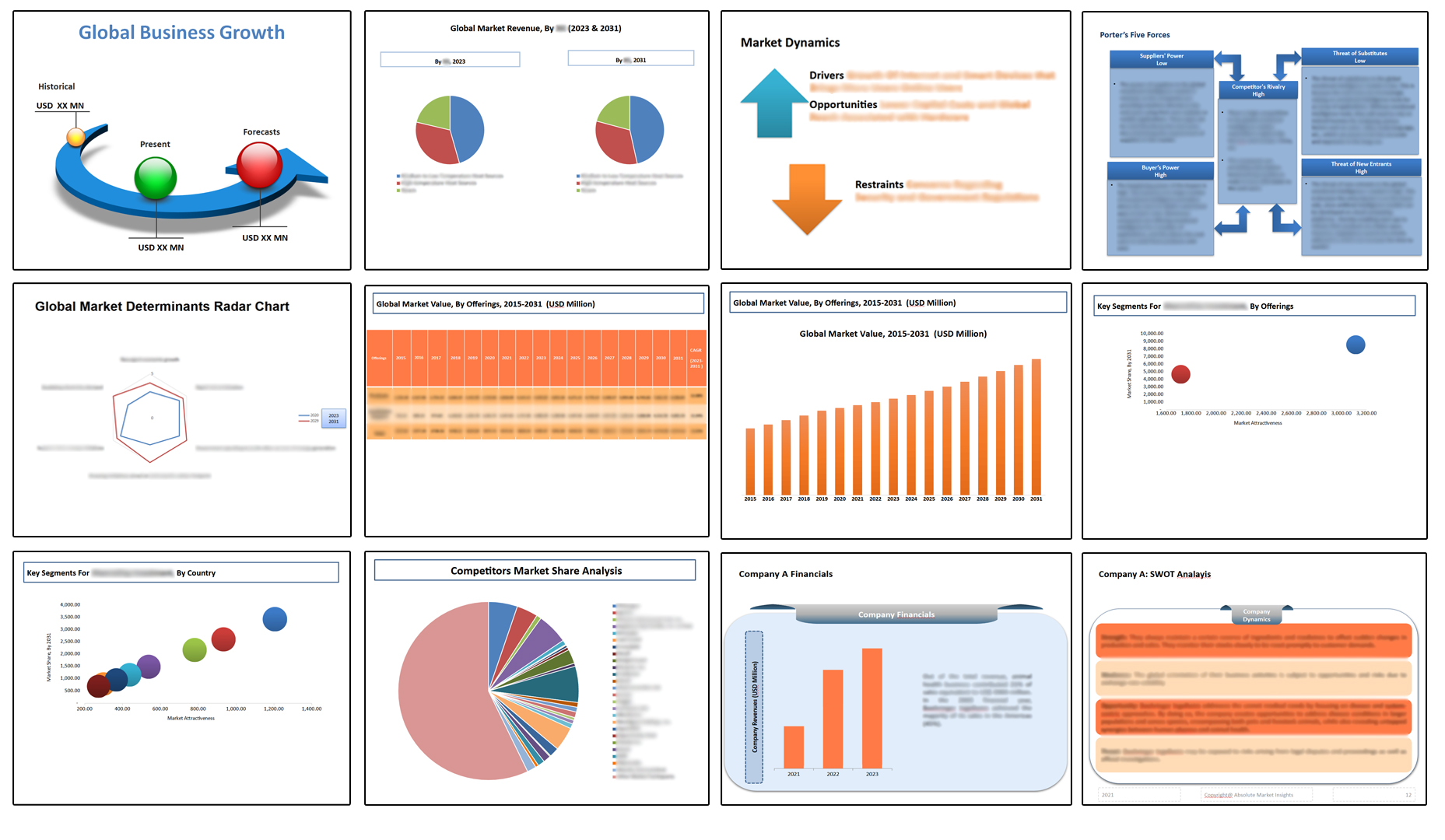
Table of Contents
Note: This ToC is tentative and can be changed according to the research study conducted during the course of report completion.
**Exclusive for Multi-User and Enterprise User.
Global Power Line Communication System Market
By Type
- Narrowband PLC
- Broadband PLC
By Component
- Hardware
- Software
- Service
By Application
- Energy Management and Smart Grid
- Indoor Networking
By Voltage
- Low
- Medium
- High
By End User
- Residential
- Commercial
- Industrial
By Region
- North America (U.S., Canada, Mexico, Rest of North America)
- Europe (France, The UK, Spain, Germany, Italy, Nordic Countries (Denmark, Finland, Iceland, Sweden, Norway), Benelux Union (Belgium, The Netherlands, Luxembourg), Rest of Europe)
- Asia Pacific (China, Japan, India, New Zealand, Australia, South Korea, Southeast Asia (Indonesia, Thailand, Malaysia, Singapore, Rest of Southeast Asia), Rest of Asia Pacific)
- Middle East & Africa (Saudi Arabia, UAE, Egypt, Kuwait, South Africa, Rest of Middle East & Africa)
- Latin America (Brazil, Argentina, Rest of Latin America)
The Niche Research approach encompasses both primary and secondary research methods to provide comprehensive insights. While primary research is the cornerstone of our studies, we also incorporate secondary research sources such as company annual reports, premium industry databases, press releases, industry journals, and white papers.
Within our primary research, we actively engage with various industry stakeholders, conducting paid interviews and surveys. Our meticulous analysis extends to every market participant in major countries, allowing us to thoroughly examine their portfolios, calculate market shares, and segment revenues.
Our data collection primarily focuses on individual countries within our research scope, enabling us to estimate regional market sizes. Typically, we employ a bottom-up approach, meticulously tracking trends in different countries. We analyze growth drivers, constraints, technological innovations, and opportunities for each country, ultimately arriving at regional figures.Our process begins by examining the growth prospects of each country. Building upon these insights, we project growth and trends for the entire region. Finally, we utilize our proprietary model to refine estimations and forecasts.
Our data validation standards are integral to ensuring the reliability and accuracy of our research findings. Here’s a breakdown of our data validation processes and the stakeholders we engage with during our primary research:
- Supply Side Analysis: We initiate a supply side analysis by directly contacting market participants, through telephonic interviews and questionnaires containing both open-ended and close-ended questions. We gather information on their portfolios, segment revenues, developments, and growth strategies.
- Demand Side Analysis: To gain insights into adoption trends and consumer preferences, we reach out to target customers and users (non-vendors). This information forms a vital part of the qualitative analysis section of our reports, covering market dynamics, adoption trends, consumer behavior, spending patterns, and other related aspects.
- Consultant Insights: We tap into the expertise of our partner consultants from around the world to obtain their unique viewpoints and perspectives. Their insights contribute to a well-rounded understanding of the markets under investigation.
- In-House Validation: To ensure data accuracy and reliability, we conduct cross-validation of data points and information through our in-house team of consultants and utilize advanced data modeling tools for thorough verification.
The forecasts we provide are based on a comprehensive assessment of various factors, including:
- Market Trends and Past Performance (Last Five Years): We accurately analyze market trends and performance data from preceding five years to identify historical patterns and understand the market’s evolution.
- Historical Performance and Growth of Market Participants: We assess the historical performance and growth trajectories of key market participants. This analysis provides insights into the competitive landscape and individual company strategies.
- Market Determinants Impact Analysis (Next Eight Years): We conduct a rigorous analysis of the factors that are projected to influence the market over the next eight years. This includes assessing both internal and external determinants that can shape market dynamics.
- Drivers and Challenges for the Forecast Period:Identify the factors expected to drive market growth during the forecast period, as well as the challenges that the industry may face. This analysis aids in deriving an accurate growth rate projection.
- New Acquisitions, Collaborations, or Partnerships: We keep a close watch on any new acquisitions, collaborations, or partnerships within the industry. These developments can have a significant impact on market dynamics and competitiveness.
- Macro and Micro Factors Analysis:A thorough examination of both macro-level factors (e.g., economic trends, regulatory changes) and micro-level factors (e.g., technological advancements, consumer preferences) that may influence the market during the forecast period.
- End-User Sentiment Analysis: To understand the market from the end-user perspective, we conduct sentiment analysis. This involves assessing the sentiment, preferences, and feedback of the end-users, which can provide valuable insights into market trends.
- Perspective of Primary Participants: Insights gathered directly from primary research participants play a crucial role in shaping our forecasts. Their perspectives and experiences provide valuable qualitative data.
- Year-on-Year Growth Trend: We utilize a year-on-year growth trend based on historical market growth and expected future trends. This helps in formulating our growth projections, aligning them with the market’s historical performance.
Research process adopted by TNR involves multiple stages, including data collection, validation, quality checks, and presentation. It’s crucial that the data and information we provide add value to your existing market understanding and expertise. We have also established partnerships with business consulting, research, and survey organizations across regions and globally to collaborate on regional analysis and data validation, ensuring the highest level of accuracy and reliability in our reports.








